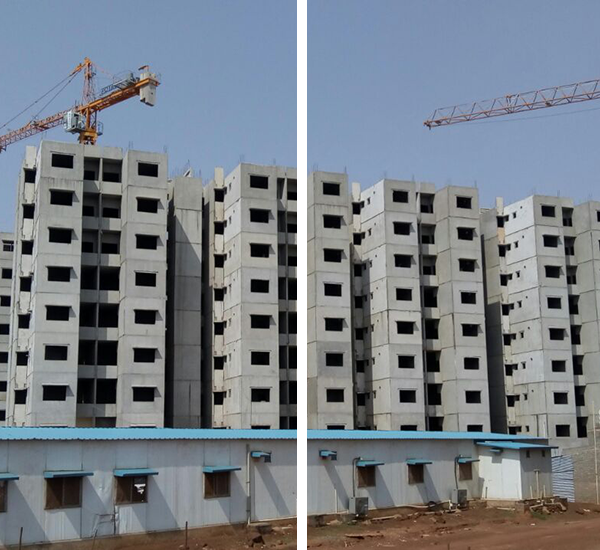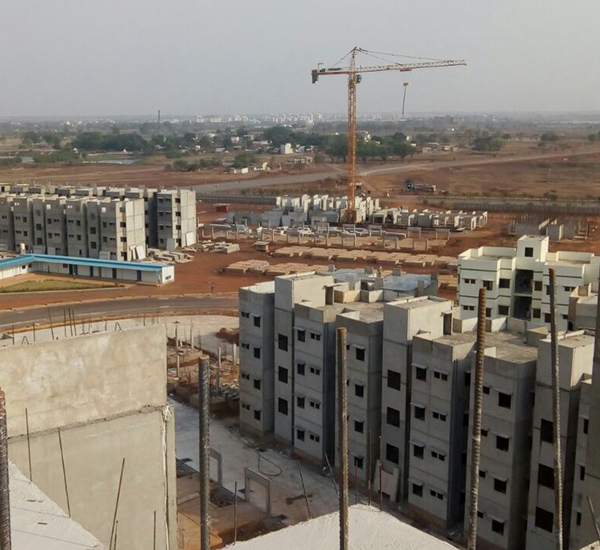
A well-known subject we all are aware is that INDIA is at its best in all areas and forms. Today we are the 5th largest with a GDP inching for 4 Trillion economy. With this robust growth India as a country requires huge Infrastructure for all its Industry whether Agriculture, Automobile, Telecom, Information Technlogy or Digitisation we need Technology to speed up the production or deliveries. A major portion is Construction and now this industry is at the helm of activities. Precast is the trend and solution to meet the speed & target of the industry. Even though we are seeing it ourselves the Precast Technology serving as solution in all Infra Structure Projects from last two decades we still lag & hesitate to adopt the Precast Technology for smaller Construction activities. It is high time we bring about a change in the industry which is already facing acute shortage of skill set in the industry.
We at PEEBALIO are glad and have the pride to introduce ourselves as Precast Construction Organisation with lots of good challenging projects being delivered for our clients in a short time.
The Precast Concrete was engineered/invented by John Alexander Brodie in Liverpool England and later flourished around the world because of its advantages. The concept of precast ( also known as prefabricated ) construction includes those buildings where the majority of structural components are standardised and produced in plants in a location away from the building and then transported to the site for assembly/installation. Low Costs in comparison to traditional construction, economies of scale, logistics, and skill level required, end user friendliness, etc are some of the encouraging factors for the popularity and acceptance of precast technology construction. Precast is always of the highest quality as designed production process and the controlled environment enable real time monitoring of quality and easy adjustments in raw materials, casting and finishing. The outcome is cured, finished and equipped for easy logistics and installation. Depending on the elements shape, size, mix designs the curing cycle can vary from 16 hrs to 36 hrs and enables the forms to be reused accordingly without any change in dimensions or shapes consistently. Precast concrete provides inherent fire protection and resiliency. Precast will be designed for Fire resistance for certain hours and will even act as passive fire protection which does not rely on another system. Concrete does not combust and therefore contain fires in controlled spaces. In Generic terms they are resistant to mold, fire, rot, termites among other natural hazards. Precast Walls and columns can be successfully designed for load bearing. Life Span is of 50 to 100 years. Precast Concrete structures must endure all manner of environmental conditions. If the Construction is having more than 200 impressions of the same plan precast Construction can be economically lesser by 10-15% compared to conventional construction. No Raw Material is stocked at site. It reduces the requirement of traditional formworks. Props, wastage, workers, Debris Cleaning and disposal being very traumatic is erased in case of Precast Construction.
Problems can arise with the sealing of precast concrete joints. Higher Upfront cost for individual Construction activities/ Contractors. Transportation can be an issue in narrow lanes. Trained & Expert skill set required to handle the Elements at the time of Installation. Modification will be time consuming as it will involve the design from the foundation at times. Design, Engineering Complexities, Communication, Quality Control, Scheduling Progress Charting, Installation vs Manufacturing Sequencing and Transportation are the areas which needs years of experience. The most significant hazards during work with Precast Concrete Elements are uncontrolled collapse of the elements for various reasons and being stuck between the elements or some other objects

